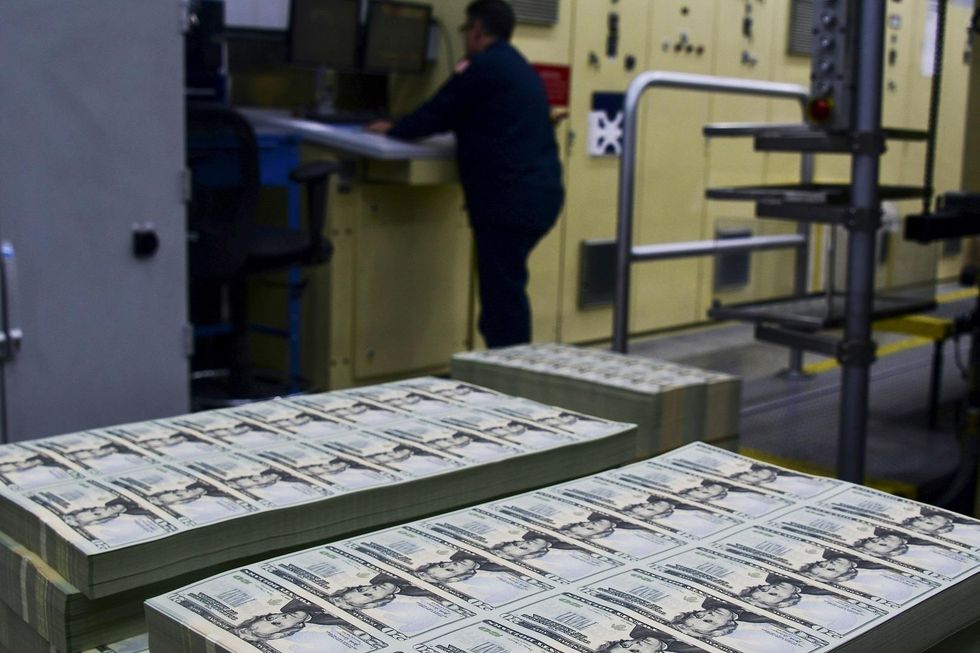
The Treasury Department reported Friday that the federal government's budget deficit for 2018 was already 21 percent higher than it had been in 2017. (EVA HAMBACH/AFP/Getty Images)

The U.S. Treasury Department announced Friday that the federal government's budget deficit had reached $684 billion.
That's already 20.8 percent higher than the deficit was at this point in 2017. And it's projected to grow by more than $200 billion before the end of the fiscal year, which could make the total deficit for 2018 nearly 34 percent higher than it was last year.
A budget deficit occurs when the federal government spends more money than it brings in. The budget deficit is not the same as the national debt, although it does contribute to it.
The budget deficit so far this year (as of July) has hit $684 billion. The month of July alone had a monthly budget deficit of $76.9 billion, 79 percent more than it was for July 2017, MarketWatch reported.
The Trump administration is projecting that when the fiscal year ends on Sept. 30, the budget deficit will have hit $890 billion — up 33.7 percent from 2017's $665.8 billion deficit. That's significantly more than projections from June that put the deficit at $804 billion.
The deficit right now — if the U.S. government did not borrow another dollar in the last two months of the fiscal year — is already higher than it has been for any year since 2012.
The deficit is currently on track to break $1 trillion annually starting in 2019. Previously, the administration had projected that this milestone would not be reached until 2020. The last, and only time, that the deficit has hit $1 trillion to date has been between 2009 and 2012, when bailouts and other counter-recession efforts ran up huge price tags. According to current projections, the deficit could remain above $1 trillion for three years.
On Aug. 1, the Treasury predicted that the U.S. government would need to borrow more money in 2018 than it has in any year since 2008. The last time the U.S. ran a budget surplus was in 2001.
The Treasury also reported that while spending is up 4.4 percent, revenues are up only 1 percent. This is due, in part, to a combination of tax cuts and increased federal spending. Interest on the $21.3 trillion national debt also increased by $50 billion.